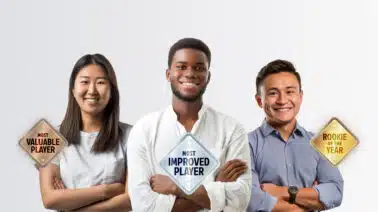In her latest book, Practical Empathy: For Collaboration and Creativity in Your Work, Indi Young offers practical tips for developing deep listening skills. While conventional product design focuses on solutions, Indi recommends developing an empathic mindset to focus on people. By learning to listen deeply, you can go beneath the surface to understand the reasoning, reactions, and guiding principles that influence people’s behaviors, thinking patterns, and perspectives.
I spoke with Indi Young to learn about practical empathy, and to explore how Udacity students can use deep understanding to make better decisions, improve product design strategies, and collaborate more successfully.
How does practical empathy add value to the design process?
The way that I find the biggest value is when it is applied to deep understanding. For example: user research—when you say that phrase, somebody’s mind will go to usability testing or A/B testing—let’s validate this thing or let’s check it and see if it is actually doing the job we hoped it would do. Or maybe user research would be more ethnographic—let’s observe people. Let’s see what they are doing, and see if we can’t help them do it better. And when I use empathy, it’s completely different from those things. It’s really about divorcing yourself from the organization, divorcing yourself from the product or the service that the organization provides—to go a little beyond it, so that your solutions can break free of that frame to have a broader application, and therefore, generate more opportunities.
Practical Empathy Tip> In her book, Indi emphasizes the importance of resisting the urge to play the researcher: “Take off the metaphorical white lab coat; put aside the notepad. When you’re actively listening to someone, you’re just a person, a human, trying to understand another human. The session is not the time for doing your own thinking or synthesis.”
Can you share an example of how you’ve seen practical empathy used effectively in designing a product or solving a problem?
One company who is doing it very well is Healthwise in Boise, Idaho. They create all the content that goes on sites like WebMD. I started working with them in 2006. They realized that their clients were not the health insurance companies and the hospitals—their clients were actually the end readers. And they needed to understand the end readers better. Up until then, the only content they would put in their database was official peer-reviewed documents from medical journals—and it sounded like that. It was basically unreadable. And they had some things—like the word “diet.” The word “diet” is forbidden in the medical industry because that means “yo-yo diet.” One of the big accomplishments of the team—the biggest success they had—was introducing the word “diet” into their content. Because “diet” is the word people actually use. To the reader, it means, “a different nutritional intake so I can get myself healthy.” They also discovered three different behavioral audience segments based on the practical empathy deep understanding listening sessions. There was one called “Inconsistent”—the person who would start something in January with a New Year’s resolution, and then just not feel interested enough to continue. Another was derailed by a specific event like, “My mother’s in the hospital right now, so I’m not eating the way I know I should.” And another was just resigned to being heavier, “I’m just going to be this weight now; I give up.” With each one of these audience segments, they set up completely different content, and I think that is a huge success as well.
Practical Empathy Tip> “Don’t let technology define your projects…define your projects by whom you’re supporting.”
What can Udacity students do to increase their ability to practice practical empathy?
Every chance you get—every day—practice listening. Practice noticing what your reactions are to what people are saying, and giving them a chance to actually describe their perspective. Practice reflecting their perspective so you can encourage them to go deeper. When talking to someone about something that maybe you don’t really believe in, completely suspend that disbelief and launch into the other person’s world. Reflect what they are saying so they feel confident saying back to you the deeper and deeper things…that’s practice.
Practical Empathy Tip> Indi suggests you try to improve your empathy skills by listening for these three components: reasoning (inner thinking), emotional reactions (responses to situations or stimuli), and guiding principles (philosophies or beliefs that are the foundation of someone’s perspective).
The benefits of honing your listening skills and using empathy to develop deep understanding go beyond improving product design. “As populations around the globe increase and communication technology shrinks distances…you will find yourself working with a wider and wider variety of people. To collaborate smoothly and to really make a difference for the people you support, the empathetic mindset will help you ensure each other’s success.”
We are so grateful to Indi Young for taking the time to chat with us. As a global community of students, learners, and builders engaged in the process of developing products meant to enhance users’ lives, Indi’s insights provide incredible guidance for improving our efforts. You can learn more about Indi’s book and work at http://indiyoung.com/.
~
Jane Sheppard is a Udacity alumna, and founding member of the Nanodegree Alumni Leadership Board.




